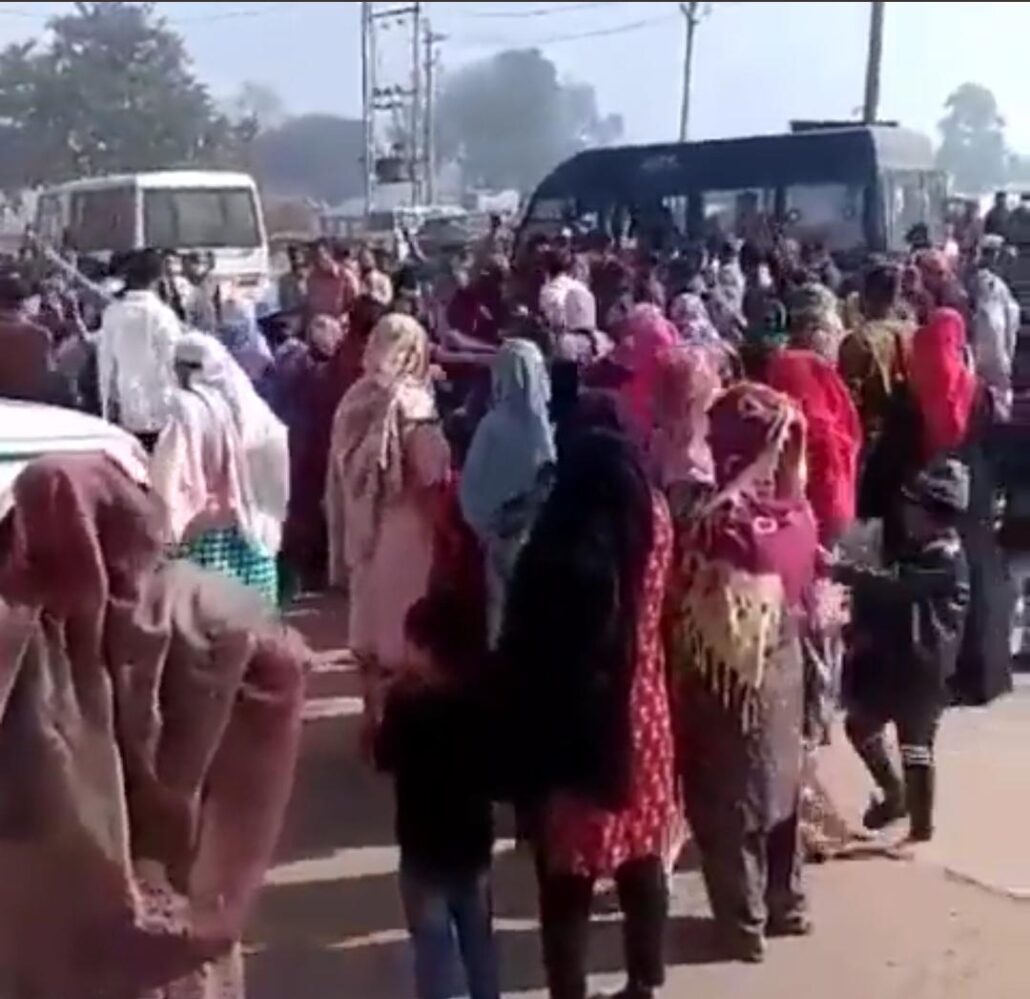
In yet another shocking incident, Muslims from Pirana village, Ahmedabad, Gujarat were allegedly forced to leave their houses by RSS workers.
The distressed Muslim villagers claimed that their houses were attacked by the RSS workers and that a Dargah was attacked as well.
In a video that surfaced on the internet, Muslim men and women could be seen walking on the road who were apparently walking towards the Collector’s office to seek his intervention in this matter.
Men, women and children can be seen on the road protesting against the RSS goons.
🆘🆘🆘
Muslims of Pirana village, about 20 kms from Ahmedabad are being forced to mass migrate BY Hindutva Terr0rists.
We need help from everyone and everywhere. Please tag each and everyone, nationally and internationally.
This is an EMERGENCY. 🦺 pic.twitter.com/yWUuX2L223
— Darab Farooqui दाराब फारूक़ी داراب فاروقی (@darab_farooqui) January 30, 2022
“Around 300-400 goons from RSS have attacked our village and we have left our homes and are on roads. We appeal to all the Muslims of Gujarat to come for our rescue,” a distressed Muslim man can be heard appealing for help in the video.
Muslim's are protesting outside collectors office, the person says they've left their homes and migrating somewhere else. pic.twitter.com/lajLURyX3z
— سعد 🍁 (@TalibTweets_) January 30, 2022
In another video, the Muslims of Pirana village were seen protesting outside the collector’s office. They claimed that they have left their houses and are migrating to some other places as they fear another attack from the RSS workers.
The controversy has erupted after a local trust named Satpanth Preranatirtha Trust got permission to construct a wall over a Khaqah of a Sufi saint Hazrat Pir Imam Shah Bawa and a Muslim cemetery in the area to which the locals objected. The trust, however, went ahead with the construction, to which the Muslims protested. The villagers allege that some graves have been dug in the cemetery near Imam Shah Dargah.
The Muslims in Pirana village have been protesting against this decision. The protesting people were thrashed by the Gujrat Police, however, the locals have said that they will sit on a strike till the decision of the “illegal” construction is not revoked. In fact, the Police in large numbers reached near the said Khanqah and assured the construction of the wall.
The Local Muslims have marched to the collector’s office on foot over the issue and threatened to go on a fast-unto-death there.
The conflict related to Imam Sahab Dargah is a decade-long conflict since members of Sangh Parivar tried to communalize the teachings of Imam Sahab and tried to reduce it to a sect of Hinduism. In this attempt, two copies of the Holy Quran one of which was handwritten by saint Imam Sahab and other Islamic books were removed from the shrine. The 2 books of the Quran disappeared which were placed near Imam Sahab’s Tomb.
King Aurangzeb’s Farman, a document donating 45 acres of land and money to the trust, also vanished. The original copy of this document which is written on a silver plate is in the trust’s possession. When Muslims lodged a case against the vanishing of these books and documents, they were arrested for looting and sent to the Central Jail, Sabarmati.
After the death of saint Imam Sahab Bawa, a shrine was constructed over his tomb in the private property belonging to the Muslims and administrated by the head of the Satpanthis called `Kaka. After the Satpanthis filed a case against the then Kaka Ramji Laxman for misusing funds the court had ordered for setting up a public trust for management.
A conflict arose between the Muslims and Satpanthis when the last religious leader Karsan Das Kaka tried to Hinduise the belief. Karsan Das Kaka tried to communalize the beliefs of Imam Sahab by making changes in his scripts, prayers, rituals hence trying to evict the Islamic beliefs.
The dargah was even re-named `Prerna Pith’ or `samadhi mandir’ post Babri Masjid demolition fervour in 1933.
In January 2003, the traditional Tazia procession from the masjid to the dargah on the day of Moharram was also stopped.
Citing that it was not part of the dargah complex, the trust had cut off water and electricity supply to the masjid in the early 2000s. A barbed-wire fence was also built which separates the masjid from the dargah.




